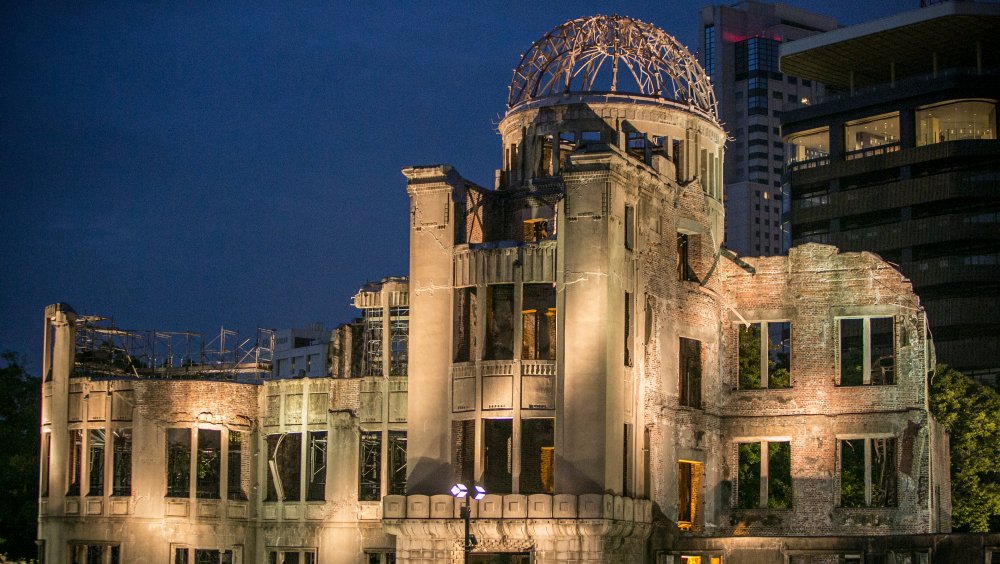How Much Radiation Still Exists In Hiroshima?
"Father of the atomic bomb" J. Robert Oppenheimer witnessed the first successful detonation of his baby in July 1945, per History. The explosion produced a 40,000-foot mushroom cloud. Looking back on that scene, the scientist spoke with hopelessness in his eyes: "I remembered the line from the Hindu scripture the Bhagavad-Gita ... Now I am become Death, the destroyer of worlds.' I suppose we all thought that, one way or another." But even Oppenheimer's mournful remarks couldn't begin to capture the sheer annihilation his creation was capable of.
On August 6, 1945, Colonel Paul Tibbets, pilot of the B-29 bomber Enola Gay, dropped Oppenheimer's world-destroying weapon onto Japan, in the first of two nuclear strikes on the country. As detailed by the U.S. Department of Energy, the horrifically innocent-sounding "Little Boy" exploded 1,900 feet above Hiroshima. It packed the power of 15,000 tons of TNT. Tibbets recalled that "the city was hidden by that awful cloud ... boiling up, mushrooming, terrible and incredibly tall."
Little Boy leveled every structure within a mile a shattered windows 12 miles away. The blast blew a boy through the window of his collapsing home and across the street. The searing heat "[burned] the dark patterns of clothing onto skin and the shadows of bodies onto walls." Ninety percent of Hiroshima residents within a half-mile of the blast died in the first 10 minutes. An estimated 80,000 people died on the first day alone. Radiation exposure would kill tens of thousands more in the months and years that followed.
Hiroshima's road to recovery
According to Columbia University's Center for Nuclear Studies, between 90,000 and 166,000 people perished in Hiroshima "within the first few months" of the nuclear strike. The U.S. attack on Nagasaki, which occurred three days after the Hiroshima bombing, immediately killed an estimated 40,000 people, via History, while 60,000 to 80,000 more died in first few months. While some of these deaths resulted from the force and heat of the explosions, many also died from jaw-dropping levels of radiation.
Live Science writes that a 2018 study looked at the dose of radiation absorbed by a the jaw of a Hiroshima victim who was less than a mile from the bomb's hypocenter. For context, it would take 5 units of radiation known as grays to kill a person whose whole body was exposed. The jawbone registered almost twice that: 9.46 grays. However, contrary to what many expected, the city didn't become a permanent nuclear No Man's Land. Rather, because the bomb exploded so far above ground, most of the radiation decayed within days. Today, Hiroshima's radiation levels are virtually indistinguishable from the trace amounts found throughout the world.

